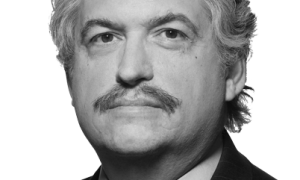The federal government now considers a family of four in New York City to be poor if its pre-tax income is below $37,900.Even with full medical coverage.
The calculation helps explain why newly revised Census Bureau figures hike the number of poor Americans to 49 million as of last year, further widening an already yawning gap between ordinary perceptions of poverty and how the government sees it.
This breathtaking number begs the question: What does it mean to be “poor” in the United States?
To the average American, the word “poverty” means significant material hardship and need. It means lack of a warm, dry home, recurring hunger and malnutrition, no medical care, worn-out clothes for the children. The mainstream media reinforce this view: The typical TV news story on poverty features a homeless family with kids living in the back of a van.
But poverty as the federal government defines it differs greatly from these images. Only 2 percent of the official poor are homeless. According to the government’s own data, the typical poor family lives in a house or apartment that’s not only in good repair but is larger than the homes of the average non-poor person in England, France or Germany.
The typical “poor” American experiences no material hardships, receives medical care whenever needed, has an ample diet and wasn’t hungry for even a single day the previous year. According to the US Department of Agriculture, the nutritional quality of the diets of poor children is identical to that of upper middle class kids.
In America, about 80 percent of poor families have air conditioning, nearly two-thirds have cable or satellite TV, half have a computer and a third have a wide-screen LCD or plasma TV.
All these government statistics were based on the Census Bureau’s old definition of poverty. The new definition, released last week, stretches that gap between common-sense and government perspectives even further.
Previously, a family of four was considered poor if cash income was less than $22,800. The new definition sharply jerks up this threshold, especially in large cities.
Now, a family of four with full medical insurance, living in Oakland, can be considered “poor” if its yearly pre-tax income is below $42,500. In Washington, DC, the figure is $40,300; in Boston, $39,500; in New York, $37,900.
Remarkably, for the first time these new poverty thresholds are linked to an “escalator” that will boost them faster than inflation year after year. The income thresholds will rise automatically in direct proportion to any rise in the actual living standards of the average American.
While the old poverty measure counted absolute purchasing power (how much steak and potatoes you can buy), the new measure counts comparative purchasing power (how much steak and potatoes you can buy relative to other people.)
This means it will be difficult to reduce poverty in America no matter how much the living conditions of the poor actually improve. Imagine a sprinter in a race where the finish line is moved back four feet every time the runner takes a step.
Look at it this way: If the real income of every single American were to double overnight, the new measure would show no drop in poverty because the poverty-income thresholds also would double. Under this new definition, we can reduce poverty only if the incomes of the “poor” rise much faster than those of everyone else.
The goal of fighting poverty is no longer about meeting physical needs; instead it has been covertly shifted to equalizing incomes, or “spreading the wealth.”
Divorced from actual living conditions, the new government report on “poverty” is merely an advertising tool for expanding the welfare state.
Robert Rector, a leading authority on poverty and welfare, is senior research fellow in domestic policy at The Heritage Foundation.
First appeared in New York Post.




